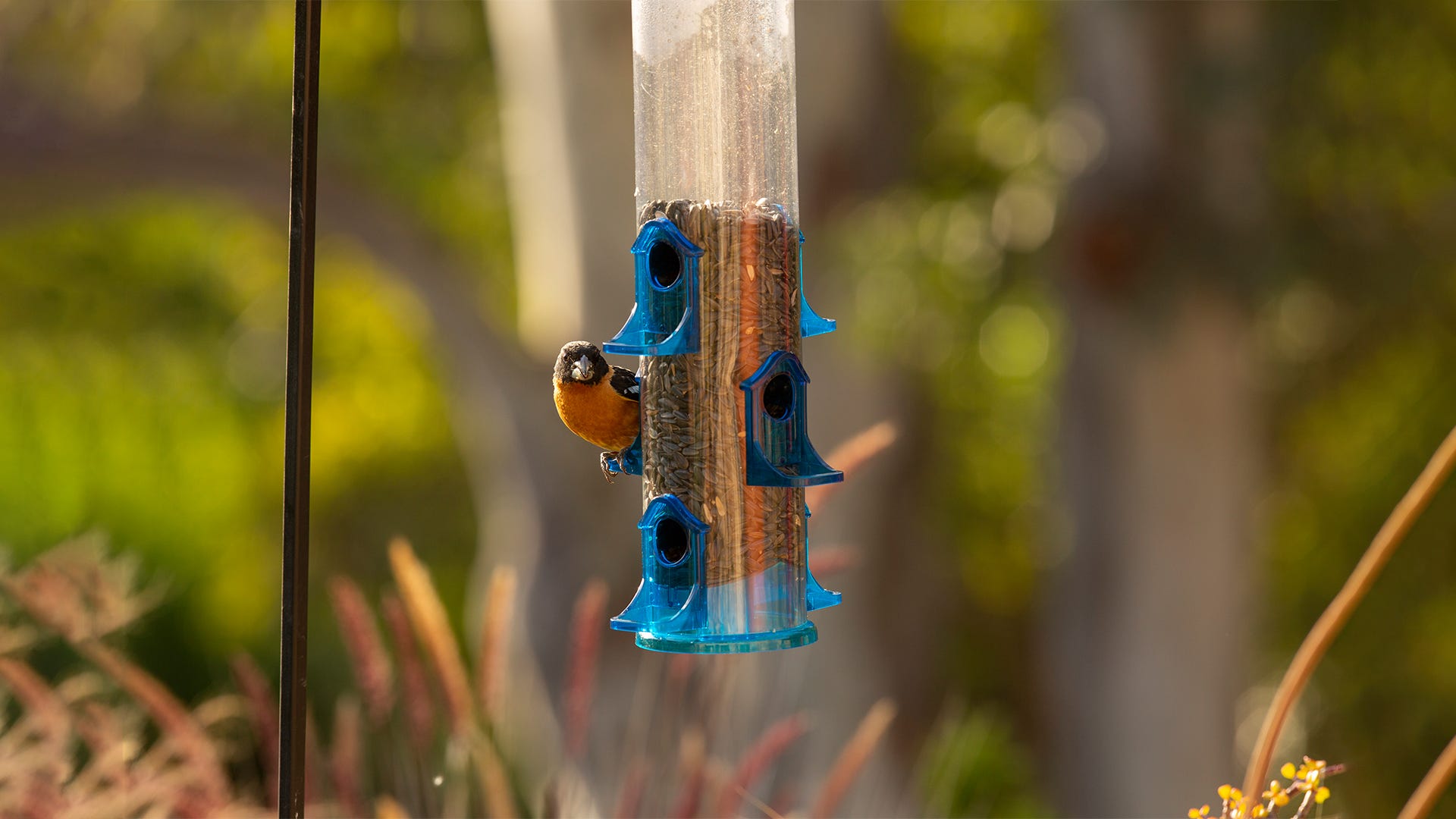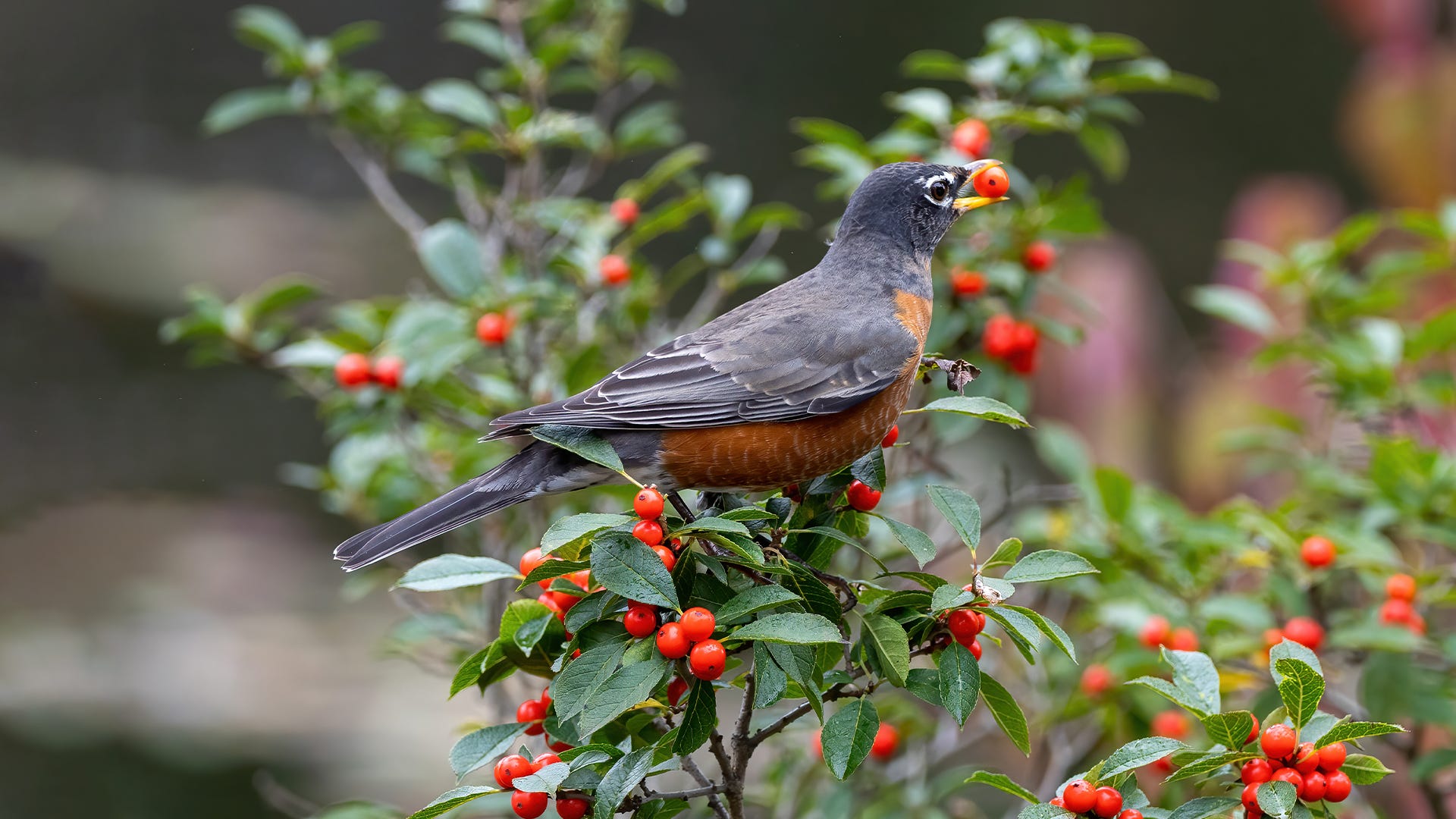
Birdwatching can be a tricky activity. Often, as soon as the bird realizes your presence, it will take off. Being able to observe birds up close is a rarity, and a coveted interaction for many birders. But there are some bird species that can grow comfortable with human interaction—even to the point where they will eat out of people’s hands. Blue jays, gray jays, chickadees, and even hummingbirds, have been known to land on people to eat.
Should You Feed Birds by Hand?
Even though birds may feel comfortable landing on your hand in order to eat, friends of birds may wonder if the practice is okay. Sarah Katherine Wagner, a public information specialist at Cornell Lab of Ornithology says for her grandmother, hand-feeding birds strengthened her relationship with the birds in her yard, and her own passion for conservation. “This connection is a valuable one, but this is a tricky topic,” Wagner says. “There are absolutely times when feeding birds is not a good idea.”
While it may be okay to let some birds hand-feed, observing them from a bird feeder is likely the safer route. Hand-feeding birds can alter their behavior in harmful ways. It may also potentially spread diseases to humans.
How to Hand Feed Birds Safely
If you are thinking about hand-feeding birds, here are some guidelines to help keep yourself and the birds safe.
Do Not Feed Endangered or Vulnerable Species
In Florida, feeding the Florida Scrub Jay used to be a common practice. The docile bird frequently came to people for food, resulting in those jays reproducing earlier in the year—before the caterpillars they relied on were available. Hand-feeding, plus habitat fragmentation, led to the decline of the Florida Scrub Jay, which is now officially considered threatened. Feeding Florida Scrub Jays is now illegal.
In general, feeding endangered or threatened birds can alter their behavior in ways that we may not be aware of. It can ultimately create unforeseen negative effects. Hand-feeding may intensify these effects, especially for animals who have not thrived in human environments.
Do Not Feed Sick or Injured Birds
If you find a sick or injured bird, do not attempt to feed it food or water. Doing so can put the bird at greater
risk, and may expose you to potential diseases. If you do find an injured bird, gently move it away from any
obvious dangers like roads and call a certified wildlife rehabilitation center. If the bird is sick, wear gloves
before moving it.

Do Not Feed Birds that Can Become Aggressive
Many of us have (intentionally or unintentionally) fed ducks, geese or seagulls when they have decided to join us on a picnic lunch. Waterfowl that grow accustomed to human handouts can come to expect them, and pester park visitors for more. Feeding these birds by hand (or tossing them bread) can result in aggressive behavior. Ultimately this may lead to an unsafe environment for both humans and birds.
Do Not Feed in Areas Where Bird Flu is Present
If you are in an area where bird flu is present, you should avoid touching any birds, including ones that do not appear to be sick. The highly pathogenic avian flu, otherwise known as the Asian H5N1 virus, has not been found in any birds or people in North America to date. If you find a bird that is sick, contact a wildlife rehabilitator.
Do Not Try to Tame Wild Birds
Hand-feeding birds to the point that they become dependent on you as a primary source of food may cause the bird more harm than it helps them. While feeding birds is different than feeding other wild animals, altering a bird’s behavior can make it more difficult for it to survive in the wild. Also, be sure not to feed birds human food. Instead, stick to safer foods for birds like black oil sunflower seed.
Do Volunteer
But if you do want some hands-on experience helping birds, consider volunteering for a nearby wildlife rehabilitation center. Wildlife rehabilitators may get to help feed and care for injured birds, assist in banding, or even participate in releases. Your local Audubon chapter or your state wildlife or parks department may be able to point you toward a bird rehabilitation center in need of volunteers.

Do Wash Your Hands
If you come into contact with birds (or feathers, nests, or egg shells), it’s always a good idea to wash your hands afterward.
Do Hang a Bird Feeder
Hand-feeding birds may not be the best practice, but there is nothing wrong with observing them from a bird feeder in your backyard. Watching birds from a feeder will allow you to enjoy your avian neighbors without putting them in harm’s way.’







